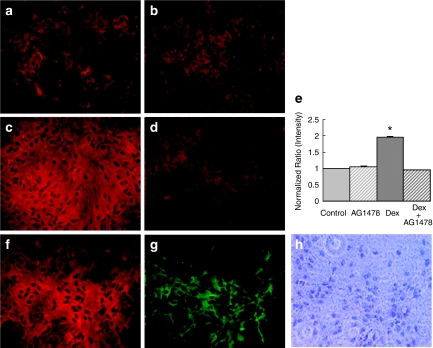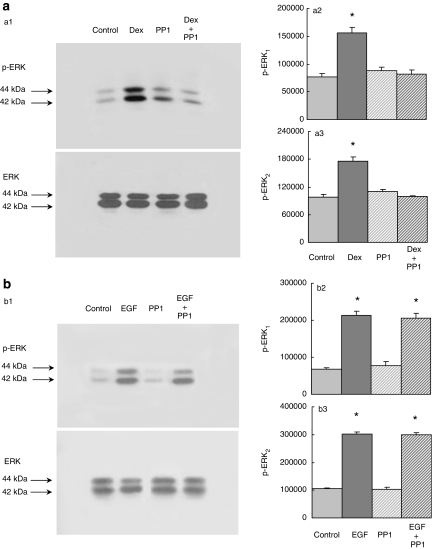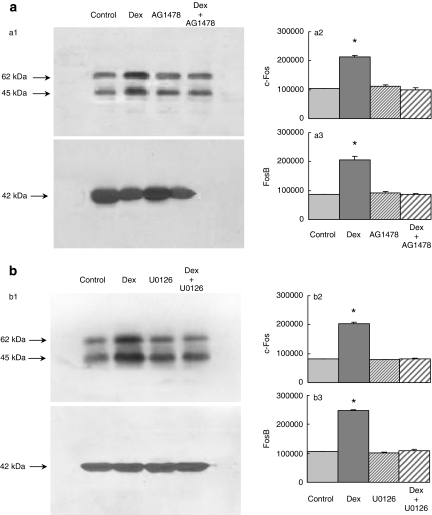![Dexmedetomidine HCl [(S)-Medetomidine]](/upload/1124/V1143.png)
| Size | Price | Stock | Qty |
|---|---|---|---|
| 10mg |
|
||
| 25mg |
|
||
| 50mg |
|
||
| 100mg |
|
||
| 250mg |
|
||
| 500mg |
|
||
| 1g |
|
||
| Other Sizes |
|
Purity: ≥98%
Dexmedetomidine HCl (Precedex), the hydrochloride salt of Dexmedetomidine which is the dexter isomer of medetomidine, is a highly selective and potent alpha-2 adrenoceptor agonist with sedative effects. It reduces anesthetic requirements for patients by providing significant sedation. Dexmedetomidine has a relatively high ratio of α2/α1-activity (1620:1 as compared with 220:1 for clonidine) and, therefore, is considered a full agonist of the α2 receptor. This may result in more potent effects of sedation without unwanted cardiovascular effects from α1 receptor activation.
| Targets |
α2-adrenergic receptor ( IC50 = 1.08 nM )
|
|
|---|---|---|
| ln Vitro |
|
|
| ln Vivo |
Medetomidine (10-100 μg/kg; i.v. at 5-min intervals) causes a dose-dependent dilation of the pupils in rats given pentobarbitone[1].
|
|
| Animal Protocol |
Female Sprague-Dawley rats (270-350 g)
1, 5, 10, 50, 100 mg/kg I.v. at 5-min intervals |
|
| Toxicity/Toxicokinetics |
Effects During Pregnancy and Lactation
◉ Summary of Use during Lactation Limited data indicate that very small amounts of dexmedetomidine are excreted into breastmilk for 4 to 6 hours after the end of an intravenous infusion. The drug is absent from breastmilk by 24 hours after the end of an infusion. The amounts in milk after sublingual use are expected to be less than after intravenous infusion. Because of the low dose in milk and its poor oral bioavailability, dexmedetomidine would not be expected to cause adverse effects in breastfed infants or neonates. Monitor the breastfed infant for irritability during sublingual use. ◉ Effects in Breastfed Infants Relevant published information was not found as of the revision date. ◉ Effects on Lactation and Breastmilk A double-blind study randomized 160 women receiving an elective cesarean section under spinal anesthesia to receive either sufentanil for patient-controlled intravenous analgesia (standard care) or standard care plus dexmedetomidine. Dexmedetomidine was given as 5 mcg/kg, followed by a continuous infusion of 0.5 mcg/kg per hour until the end of surgery. Patient in this latter group received dexmedetomidine plus sufentanil for patient-controlled intravenous analgesia postoperatively for 2 days. Patients who received dexmedetomidine had a shorter time to the first lactation (28 vs 34 hours), achieved exclusive breastfeeding sooner (8 vs 11 days) and had a greater amount of milk on the second day postpartum. In a retrospective study of women undergoing cesarean section deliveries, 3 regimens were compared: dexmedetomidine before anesthesia and during delivery (n = 115), normal saline before anesthesia and during delivery and dexmedetomidine after delivery (n = 109), and normal saline before anesthesia and during delivery (n = 168). Women who received dexmedetomidine before anesthesia and during delivery consumed less sufentanil and ondansetron during their hospitalization and had a slightly shorter time to the first production of milk than women in the other groups (25 minutes vs 27 to 28 minutes). |
|
| References | ||
| Additional Infomation |
Dexmedetomidine hydrochloride is a medetomidine hydrochloride. It has a role as a sedative. It contains a dexmedetomidine. It is an enantiomer of a levomedetomidine hydrochloride.
Dexmedetomidine Hydrochloride is the hydrochloride salt form of dexmedetomidine, an imidazole derivate and active d-isomer of medetomidine with analgesic, anxiolytic and sedative activities. Dexmedetomidine selectively binds to and activates presynaptic alpha-2 adrenoceptors located in the brain, thereby inhibiting the release of norepinephrine from synaptic vesicles. This leads to an inhibition of postsynaptic activation of adrenoceptors, which inhibits sympathetic activity, thereby leading to analgesia, sedation and anxiolysis. An imidazole derivative that is an agonist of ADRENERGIC ALPHA-2 RECEPTORS. It is closely related to MEDETOMIDINE, which is the racemic form of this compound. Drug Indication For sedation of adult intensive care unit patients requiring a sedation level not deeper than arousal in response to verbal stimulation (corresponding to Richmond Agitation-Sedation Scale (RASS) 0 to -3). Non-invasive, mildly to moderately painful, procedures and examinations which require restraint, sedation and analgesia in dogs and cats. Deep sedation and analgesia in dogs in concomitant use with butorphanol for medical and minor surgical procedures. Premedication in dogs and cats before induction and maintenance of general anaesthesia. Non-invasive, mildly to moderately painful, procedures and examinations which require restraint, sedation and analgesia in dogs and cats. Deep sedation and analgesia in dogs in concomitant use with butorphanol for medical and minor surgical procedures. Premedication in dogs and cats before induction and maintenance of general anaesthesia. Noninvasive, mildly to moderately painful, procedures and examinations which require restraint, sedation and analgesia in dogs and cats. Premedication in cats before induction and maintenance of general anaesthesia with ketamine. Deep sedation and analgesia in dogs in concomitant use with butorphanol for medical and minor surgical procedures. Premedication in dogs before induction and maintenance of general anaesthesia. Alleviation of acute anxiety and fear associated with noise in dogs. Treatment of bipolar disorder, Treatment of schizophrenia |
| Molecular Formula |
C13H17CLN2
|
|
|---|---|---|
| Molecular Weight |
236.74
|
|
| Exact Mass |
236.108
|
|
| Elemental Analysis |
C, 65.95; H, 7.24; Cl, 14.97; N, 11.83
|
|
| CAS # |
145108-58-3
|
|
| Related CAS # |
Dexmedetomidine; 113775-47-6; Medetomidine; 86347-14-0; Medetomidine hydrochloride; 86347-15-1; Dexmedetomidine-13C,d3 hydrochloride
|
|
| PubChem CID |
6918081
|
|
| Appearance |
White to off-white solid powder
|
|
| Boiling Point |
381.9ºC at 760 mmHg
|
|
| Melting Point |
153 - 158ºC
|
|
| Vapour Pressure |
1.08E-05mmHg at 25°C
|
|
| LogP |
3.98
|
|
| Hydrogen Bond Donor Count |
2
|
|
| Hydrogen Bond Acceptor Count |
1
|
|
| Rotatable Bond Count |
2
|
|
| Heavy Atom Count |
16
|
|
| Complexity |
205
|
|
| Defined Atom Stereocenter Count |
1
|
|
| SMILES |
Cl[H].N1([H])C([H])=NC([H])=C1[C@@]([H])(C([H])([H])[H])C1=C([H])C([H])=C([H])C(C([H])([H])[H])=C1C([H])([H])[H]
|
|
| InChi Key |
VPNGEIHDPSLNMU-MERQFXBCSA-N
|
|
| InChi Code |
InChI=1S/C13H16N2.ClH/c1-9-5-4-6-12(10(9)2)11(3)13-7-14-8-15-13;/h4-8,11H,1-3H3,(H,14,15);1H/t11-;/m0./s1
|
|
| Chemical Name |
5-[(1S)-1-(2,3-dimethylphenyl)ethyl]-1H-imidazole;hydrochloride
|
|
| Synonyms |
|
|
| HS Tariff Code |
2934.99.9001
|
|
| Storage |
Powder -20°C 3 years 4°C 2 years In solvent -80°C 6 months -20°C 1 month Note: Please store this product in a sealed and protected environment, avoid exposure to moisture. |
|
| Shipping Condition |
Room temperature (This product is stable at ambient temperature for a few days during ordinary shipping and time spent in Customs)
|
| Solubility (In Vitro) |
|
|||
|---|---|---|---|---|
| Solubility (In Vivo) |
Solubility in Formulation 1: ≥ 2.08 mg/mL (8.79 mM) (saturation unknown) in 10% DMSO + 40% PEG300 + 5% Tween80 + 45% Saline (add these co-solvents sequentially from left to right, and one by one), clear solution.
For example, if 1 mL of working solution is to be prepared, you can add 100 μL of 20.8 mg/mL clear DMSO stock solution to 400 μL PEG300 and mix evenly; then add 50 μL Tween-80 to the above solution and mix evenly; then add 450 μL normal saline to adjust the volume to 1 mL. Preparation of saline: Dissolve 0.9 g of sodium chloride in 100 mL ddH₂ O to obtain a clear solution. Solubility in Formulation 2: ≥ 2.08 mg/mL (8.79 mM) (saturation unknown) in 10% DMSO + 90% (20% SBE-β-CD in Saline) (add these co-solvents sequentially from left to right, and one by one), clear solution. For example, if 1 mL of working solution is to be prepared, you can add 100 μL of 20.8 mg/mL clear DMSO stock solution to 900 μL of 20% SBE-β-CD physiological saline solution and mix evenly. Preparation of 20% SBE-β-CD in Saline (4°C,1 week): Dissolve 2 g SBE-β-CD in 10 mL saline to obtain a clear solution. View More
Solubility in Formulation 3: ≥ 2.08 mg/mL (8.79 mM) (saturation unknown) in 10% DMSO + 90% Corn Oil (add these co-solvents sequentially from left to right, and one by one), clear solution. |
| Preparing Stock Solutions | 1 mg | 5 mg | 10 mg | |
| 1 mM | 4.2240 mL | 21.1202 mL | 42.2404 mL | |
| 5 mM | 0.8448 mL | 4.2240 mL | 8.4481 mL | |
| 10 mM | 0.4224 mL | 2.1120 mL | 4.2240 mL |
*Note: Please select an appropriate solvent for the preparation of stock solution based on your experiment needs. For most products, DMSO can be used for preparing stock solutions (e.g. 5 mM, 10 mM, or 20 mM concentration); some products with high aqueous solubility may be dissolved in water directly. Solubility information is available at the above Solubility Data section. Once the stock solution is prepared, aliquot it to routine usage volumes and store at -20°C or -80°C. Avoid repeated freeze and thaw cycles.
Calculation results
Working concentration: mg/mL;
Method for preparing DMSO stock solution: mg drug pre-dissolved in μL DMSO (stock solution concentration mg/mL). Please contact us first if the concentration exceeds the DMSO solubility of the batch of drug.
Method for preparing in vivo formulation::Take μL DMSO stock solution, next add μL PEG300, mix and clarify, next addμL Tween 80, mix and clarify, next add μL ddH2O,mix and clarify.
(1) Please be sure that the solution is clear before the addition of next solvent. Dissolution methods like vortex, ultrasound or warming and heat may be used to aid dissolving.
(2) Be sure to add the solvent(s) in order.
| NCT Number | Recruitment | interventions | Conditions | Sponsor/Collaborators | Start Date | Phases |
| NCT04635098 | Active Recruiting |
Drug: dexmedetomidine Drug: saline |
Chronic Insomnia | Ruijin Hospital | May 14, 2021 | Not Applicable |
| NCT02952222 | Active Recruiting |
Drug: Dexmedetomidine Drug: Propofol (Group P) |
Anesthesia | Keira Mason | May 11, 2018 | Phase 4 |
| NCT03522688 | Active Recruiting |
Drug: Dexmedetomidine Drug: Normal saline |
Acute Kidney Injury Liver Diseases |
Asan Medical Center | July 11, 2017 | Phase 4 |
| NCT03933306 | Active Recruiting |
Drug: Dexmedetomidine Drug: Placebo |
Blood Pressure Dexmedetomidine High-risk Patients |
Peking University First Hospital | May 20, 2019 | Phase 4 |
| NCT05671081 | Active Recruiting |
Drug: Dexmedetomidine Drug: Magnesium sulfate Drug: Narcotic Analgesics |
Anesthesia , Analgesia | Ain Shams University | January 5, 2023 | Phase 3 |
 |
|---|
 |
 |